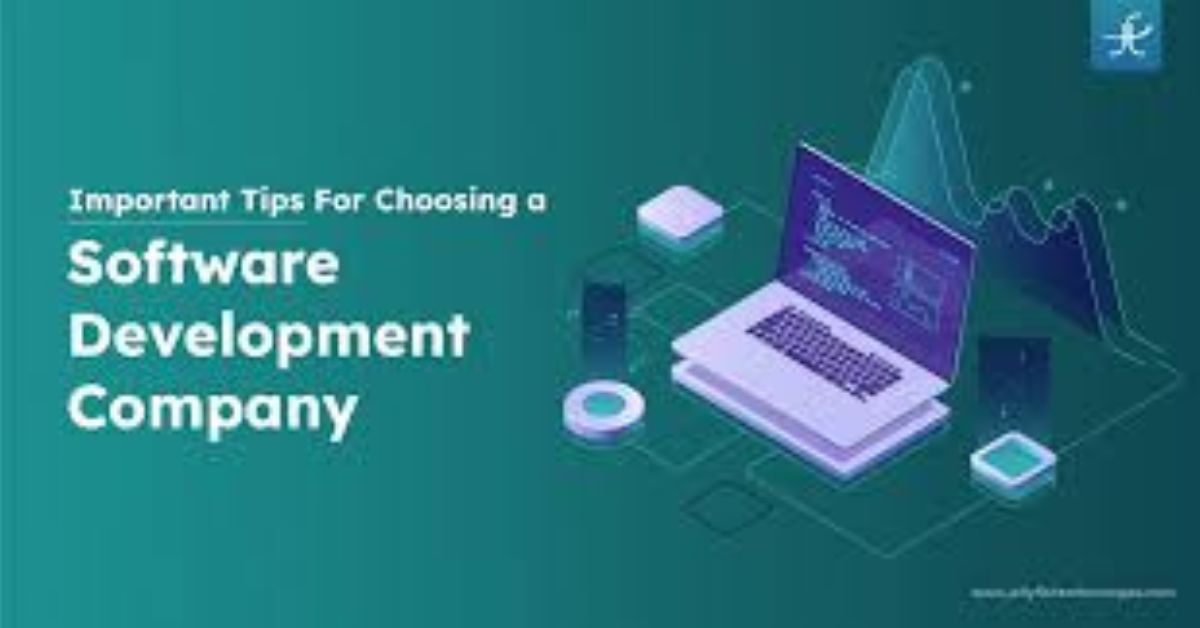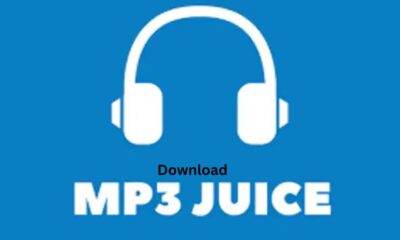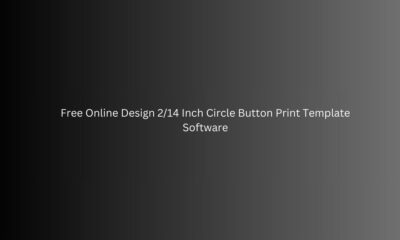SOFTWARE
What is a PDF/E File: Ways to Use, View, and Edit

PDF/E files have become an important standard for reliable long-term preservation of engineering documentation. However, not all PDF files are suited for professional archiving purposes.
The PDF/E, an ISO-standardized version of the popular PDF format, ensures documents can be accessed and viewed over extended periods of time regardless of changes in technology.
This article will explain what exactly a PDF/E file is, highlight some of its key benefits, and provide recommendations on how to best utilize PDF/E files in engineering workflows.
What is a PDF/E file?
PDF/E stands for Portable Document Format for Engineering. It is based on the PDF standard, but with additional specifications tailored towards the engineering industry’s need for dependable archiving over decades or more. The E in PDF/E indicates it is specialized for Engineering document storage.
All PDF/E files adhere to the key principles established in the ISO 19005 series of standards. This ensures engineering files saved as PDF/E documents retain integrity through migrations across different systems and upgrades.
Advantages
There are several notable benefits offered by the PDF/E file format:
- Platform Independence – Files retain integrity regardless of underlying hardware or operating systems
- Faithful Rendition – All visual aspects including fonts, graphics, layout, and color are preserved
- Self-Contained – No external references; everything is embedded within the PDF/E file
- Protection Against Obsolescence – Technology updates do not impact document appearance or usability
- Structured Metadata – Enables easier searching and parsing using modern analytics tools
- Smaller File Sizes – Highly optimized for efficient storage and transmission
- Industry Acceptance – Recognized international standard approved for archival preservation
Ways to Use PDF/E Files
Creation of Engineering Documentation
Today, nearly all engineering drawings created with CAD or BIM tools can be saved directly as PDF/E files. This integrated functionality ensures project stakeholders have access to information-rich documentation that will remain usable over long periods of time regardless of changes in engineering software or retirement of legacy viewer applications.
Modern model-based 3D design platforms like Revit also include built-in PDF/E export capabilities for simplified collaboration across extended project lifecycles.
Teams can instantly share up-to-date drawings, 3D visualizations, BIM data, and associated metadata without concerns of downstream compatibility issues. And because PDF/E files contain fonts, images, and other referenced files embedded as part of self-contained document objects, there are no broken linkages.
Streamlining of Engineering Workflows
The longevity and reliability advantages of PDF/E make it easier for engineers to organize and retain access to pertinent project files. Digital document management powered by PDF/E alleviates data preservation headaches associated with hardware migrations, software updates, or trying to work with outdated proprietary file types years later.
Engineering organizations are increasingly adopting PDF/E workflows to:
- Preserve intellectual property – Protect critical drawings, reports, models, images, etc. created over decades-long capital projects
- Maintain regulatory compliance – Prove adherence to engineering codes/standards even after original applications are retired
- Defend against litigation – Produce authentic evidence based on digitally-signed PDF/E documents with guaranteed fidelity
The ISO-standardized PDF/E specification delivers an advanced, reliable solution to streamline preservation and accessibility of engineering documentation throughout the entire building, manufacturing, utilities, infrastructure, and natural resource development lifecycle.
How to View and Edit a PDF/E File
Using Adobe Acrobat Distiller
The Adobe Acrobat Distiller function lets users easily create 100% ISO-compliant PDF/E files optimized for reliable archiving. It does this by processing existing PDF, TXT, PostScript, or XML documents through automated conversion steps.
Users also have control over image quality, downsampling, and color conversion during the distilling process. And helpful preflight tools identify any nonconforming elements prior to finalized PDF/E output.
Using Adobe Acrobat PDFMaker
Adobe PDFMaker provides direct PDF/E conversion capability from within popular Microsoft Office applications like Word, Excel, PowerPoint, and Visio, along with AutoCAD. This allows engineering teams to save As-Is representations of source files as standardized PDF/E documents without having to open secondary distiller programs.
PDFs produced via PDFMaker fully maintain all fonts, formatting, data, images, layouts, and vector-based content just as the original file. Users also access a wealth of annotation, editing, and metadata tools for enhancing documentation prior to archival-ready PDF/E export.
Editing with AI Tools
The latest advancement in PDF/E editing uses artificial intelligence capabilities for streamlining validation as well as automatic conversion of non-compliant elements. For example, Adobe Sensei algorithms can dynamically fix common issues like missing color profiles or transparent objects that may cause problems for long-term preservation.
PopAi uses advanced artificial intelligence to simplify editing, conversion, and validation of engineering documentation in compliant PDF/E formats. Users can leverage machine learning techniques to automatically fix non-conforming elements within legacy PDFs while preserving layouts, data integrity, graphics fidelity, and custom metadata schemas.
These smart ai pdf tools enhance accessibility and future-readiness of critical project documentation across complex engineering workflows.
Some benefits of AI-enhanced PDF/E builders include:
- Automated correction of non-conforming components
- Suggestions for improving compliance
- Identification of degraded or unstable images/graphics
- Checks fonts, color spaces, metadata for ISO-standardized formats
- Ensures embedding of all referenced external content
Advanced machine learning techniques enable modern PDF editors to simplify and accelerate reliable PDF/E document creation without sacrificing fidelity.
Conclusion
In summary, Portable Document Format for Engineering (PDF/E) has evolved into an ISO-standardized solution for preserving critical engineering and technical documentation electronically over decades-long horizons.
It builds upon the foundations of generic PDF technology with additional specifications optimized for maintaining visual accuracy, file integrity, metadata richness, and long-term usability throughout recurring waves of technological change.
SOFTWARE
PTO Tracking Software: A Smarter Way to Manage Employee Time-Off
Your blended juggling calendars and an error in monitoring time off create confusion, delaying approvals. With flexible work planning and remote work on fire in 2025, monitoring time off is more difficult than ever.
An IBM report discovers that firms with efficient PTO systems enjoy higher employee satisfaction, accuracy, and retention. Time off monitoring software makes it easy, saving you headaches and increasing morale. In this article, you’ll discover how this tech transforms workplaces, offering more innovative ways to handle employee time off while keeping everyone happy and productive.
Key Features to Look for in PTO Tracking Software
Track PTO, vacation days, and sick leave with ease. Time off tracking software integrates with popular time management tools, including Google Calendar, to help maintain accurate, up-to-date records and ensure adequate staffing. With automated workflows and instant alerts, managing leaves has never been simpler.
A user-friendly interface allows employees and managers to view requests without frustration. Mobile accessibility will enable employees to request vacation from anywhere, which is perfect for off-site teams. Like most vacation times, reporting features offer valuable insights to help you plan resources effectively. According to Forbes report, companies using automated PTO software experience enhanced workforce planning.
How PTO Tracking Software Improves Employee Experience
- Employees long for their vacation visibility and a time off software provides it. It ensures transparency, displaying how many vacation or sick days are left, so no one is left in the dark.
- Automated calculations and transparent approval processes prevent confusion preventing disagreements over miscalculated balances.
- Convenient, self-service request processes enable employees to easily request and monitor time-off requirements, and managers click to approve.
- This seamless process removes stress and fosters trust. For teleworkers, having flexibility in managing PTO through mobile applications means they remain connected, and their work-life balance is smooth and facilitated.
Benefits for Businesses Using Time Off Software
PTO tracking software is a business disruptor. It increases productivity by reducing administrative work-HR spends fewer hours on manual tracking and more on mission objectives. It provides compliance with labor laws and company regulations, such as compliance with state laws governing leaves minimizing legal exposure. It allows for better resource planning by displaying trends in time-offs, so you don’t over-staff when there is high business. Fewer human mistakes, such as back-to-back vacations, save one from expensive conflicts. A TechTarget article informs that companies employing centralized systems reduce administrative errors, leaving you free to grow.
Conclusion: Why PTO Tracking Software is a Smart Investment
A wise investment, the time off tracking software is worth the price of the convenience it brings to time-off management, efficacy, and staff satisfaction. It is adaptable to the unpredictability of flexible schedules in the 2025 hybrid workspace, providing visibility and compliance while reducing errors.
With its automatic accruals, payroll integration, and mobile access, it’s a timesaving solution that fosters trust. Don’t let manual tracking be your weak link; embrace an employee vacation tracking software to make your workplace more efficient, empower your employees, and make your workplace a better, happier place. Your business and your employees will thank you.
SOFTWARE
Best Radio Broadcasting Software: Our Top Picks

Running a station once meant racks of mixers, carts full of commercials, and a stressed‑out engineer on speed dial. Today, one laptop can do it all, as long as you install the right radio broadcasting software.
The challenge is choice. Search online and you’ll find dozens of apps that promise clean sound, smooth automation, and effortless streaming. Some live up to the hype. Others crash right before a sponsor’s thirty‑second spot, wrecking both revenue and reputation.
This guide cuts through the noise. It highlights seven standout products, explains who they’re built for, and shows how each handles the everyday hurdles of modern radio. By the end, you’ll know exactly which radio broadcasting software deserves a test‑drive in your studio.
What Makes Software “Best”?
Before diving into reviews, set a benchmark. Great radio broadcasting software should do three things well:
- Automate with Confidence– Handle playlists, IDs, and advert breaks without babysitting.
- Stay Rock‑Solid– Keep audio flowing even when the internet blinks or a DJ mis‑clicks.
- Grow with You– Add extra streams, remote hosts, or new ad‑traffic tools as your station expands.
Now, let’s see which programs deliver on that promise.
1. RadioBOSS
Why It Shines
RadioBOSS packs serious power into a tidy interface. Drag tracks into a playlist, drop timed events for top‑of‑hour news, and let the scheduler roll all night. A built‑in encoder streams directly to Icecast or SHOUTcast servers, trimming setup time.
Best For
Small‑to‑mid‑size FM or online stations that need affordable automation without losing pro features.
Notable Perks
- Cross‑fade control down to milliseconds
- Fail‑safe tracks if a file is missing
- Mobile remote app to tweak logs on the go
Potential Drawback
Windows‑only; Mac users need Boot Camp or a virtual machine. Still, as radio broadcasting software goes, RadioBOSS offers one of the strongest value‑for‑money packages on the market.
2. SAM Broadcaster
Why It Shines
Around since 2002, SAM Broadcaster is practically a veteran. Its advanced playlist rotation rules prevent over‑playing chart hits, while sound processing tools add polish with compression and EQ.
Best For
Internet‑only stations are looking for tight music formatting and real‑time listener statistics.
Notable Perks
- Cloud backup for playlists and metadata
- Built‑in web widgets showing “Now Playing”
- Pay‑as‑you‑grow licensing
Potential Drawback
The interface feels dated, and newcomers may find the settings maze‑like. Still, SAM remains trusted radio broadcasting software for thousands of niche streams worldwide.
3. Mixxx
Why It Shines
Free, open source, and cross‑platform, Mixxx started as a DJ tool but has matured into a capable broadcast engine. It supports ASIO, WASAPI, and Core Audio, ensuring low‑latency performance during live mixes.
Best For
Volunteer‑run community stations or hobbyists who want zero licensing cost.
Notable Perks
- Auto‑DJ mode with track‑key matching
- USB‑controller mapping for tactile mixing
- Built‑in encoder for Icecast and Shoutcast
Potential Drawback
No native traffic or billing integration, so commercial stations may need add‑ons. Yet for budget‑minded users, Mixxx proves that great radio broadcasting software doesn’t always carry a price tag.
4. PlayIt Live
Why It Shines
PlayIt Live separates playout from automation. Hosts can trigger carts during live shows, while the Scheduler service builds 24‑hour logs in the background. Voice tracking is simple: press record, talk over the intro, and the link lands in place.
Best For
Stations balancing live personalities with automated hours.
Notable Perks
- Remote voice‑track module for at‑home talent
- Audio extenders for separate studio and playout PCs
- Easy chain commands to fire relay switchers
Potential Drawback
The core features are free, but advanced modules—advert management, remote VT—cost extra. Evaluate your roadmap before committing, yet appreciate that modular pricing keeps this radio broadcasting software flexible.
5. StationPlaylist Studio & Creator
Why It Shines
This two‑part suite earns applause for reliability. Creator builds detailed clocks with rule‑based rotations; Studio plays them back without stutter. The software’s TCP/IP API lets engineers connect mixers, GPIO, or web widgets for rich automation.
Best For
Terrestrial broadcasters who crave fine control over music flow and station imaging.
Notable Perks
- Optional Streamer for AAC+ output
- Ingest of network news via line input or file drop
- Accessible interface friendly to screen‑reader users
Potential Drawback
Windows‑centric design again. Still, when broadcast engineers shortlist bulletproof radio broadcasting software, StationPlaylist usually cuts.
6. Rivendell
Why It Shines
Born in public radio, Rivendell is open‑source and Linux‑based, emphasizing stability and compliance. It supports extensive GPIO, making it perfect for larger studios that switch sources via relay.
Best For
Non‑profits or education stations that prefer Linux servers and need multiple studios running off one content hub.
Notable Perks
- MySQL database for asset sharing
- Hook‑based segue editor
- Robust cron events for timed recordings
Potential Drawback
The installation process can intimidate newcomers; you’ll need basic Linux knowledge. Yet once configured, Rivendell stands tall among free radio broadcasting software options.
7. Omnia Zetta
Why It Shines
Zetta targets enterprise networks. Its distributed architecture lets regional studios share libraries instantly, while disaster‑recovery nodes spin up within seconds. Tight integration with the Omnia audio processors guarantees pristine sound from mic to transmitter.
Best For
Large commercial clusters or national broadcasters demand no‑compromise uptime.
Notable Perks
- Site‑to‑site content replication
- Hypervisor‑ready virtual machines
- Integrated RDS and HD Radio metadata
Potential Drawback
Premium price and training requirements. Yet for elite operations, Zetta is gold‑standard radio broadcasting software.
How to Evaluate Shortlisted Programs
Even the best‑written review can’t match hands‑on experience. Follow these steps:
- Replicate Your Daily Log
Import 12 hours of music, IDs, and adverts. Does the schedule engine honor separation rules? Are segue points tight? - Stress‑Test Stability
Pull out the Ethernet cable. Kill the power to one PC. Great radio broadcasting software will keep playing or fail over gracefully. - Judge Live‑Assist Speed
Ask a DJ to run a mock show. Can they trigger stingers instantly, edit ramps on the fly, and handle last‑second caller drops? - Examine Reporting
Generate royalty logs, ad affidavits, and system health reports. If these tasks require manual spreadsheets, look elsewhere. - Check Support Culture
Post a question on the vendor’s forum or ticket portal. Measure response time and clarity. Broadcast cannot wait days for help.
Hidden Costs to Watch
- Hardware Locks– Some systems need proprietary dongles; losing one could silence your stream.
- Codec Fees– AAC+ or OPUS encoding may require separate licenses.
- Update Plans– An entry‑level price may exclude yearly patches.
- Training– Complex suites often need paid onboarding sessions. Factor these into your total cost of ownership before declaring any package the “cheapest” radio broadcasting software.
Future Trends Worth Tracking
- AI Log Assistants– Software will soon recommend playlist tweaks based on listener retention.
- Personalized Streams– Dynamic ad‑insertion per listener will become standard, even for small stations.
- Cloud Playout Redundancy– Expect instant failover between on‑prem and cloud nodes without interruption.
- Interactive Metadata– Song voting and real‑time polls push from studio to car dashboards.
- Multi‑Platform Production– Video snippets auto‑generate for TikTok or Instagram as you set segues.
When choosing radio broadcasting software, ask vendors about their roadmaps for these areas.
Final Thoughts
No two stations share the same sound—or the same operational headaches. A late‑night EDM stream might value voice‑tracking and cloud uptime, while a local news talker cares about live‑assist agility and ad affidavits. The seven options above—RadioBOSS, SAM Broadcaster, Mixxx, PlayIt Live, StationPlaylist, Rivendell, and Omnia Zetta—cover nearly every scenario, budget, and technical comfort zone.
Remember, the best radio broadcasting software is the one your team trusts when the countdown reaches zero. List your critical needs, trial contenders under real‑world pressure, and dig into support quality. Do that homework, and you’ll secure a digital backbone that keeps the hits rolling, the sponsors smiling, and the audience tuned in—day after day, show after show.
SOFTWARE
How to Choose the Best Software Development Services to Grow Your Business

In an increasingly digital and competitive market, having customized technological solutions is essential to boost growth and operational efficiency in any business. In this scenario, software development services play a strategic role, as they allow you to create tailored systems that meet your company’s specific needs. But with so many options available, how do you choose the best technology partner?
In this article, you’ll learn the most important criteria for hiring a software development service that is reliable, efficient, and aligned with your business goals. Read on and discover how to drive your company’s growth with cutting-edge technology.
1. Understand Your Company’s Needs
Before searching for a company or professional to develop your software, it’s crucial to understand what problems you need to solve. Ask yourself:
- What does my business need to automate or improve?
- What is the primary goal of the new system?
- Does it need to integrate with other systems we already use?
Having a clear vision of the problem helps create an initial scope and align expectations with the provider.
2. Look for Specialists in Your Industry
Not all software development companies are the same. Some are generalists, while others specialize in specific market segments like retail, logistics, healthcare, or education. Choosing a partner with experience in your industry can speed up the process and avoid rework, as they already understand the challenges and opportunities in the field.
3. Check Their Portfolio and Success Stories
One of the most important steps is to review the portfolio of previous projects. Reliable companies often showcase case studies on their websites, highlighting the solutions delivered, the clients they worked with, and the results achieved. This information indicates that the team has real-world experience and can add value to your business.
Additionally, look for client testimonials and reviews on reputation websites or professional networks like LinkedIn.
4. Evaluate the Development Methodology Used
Reputable companies adopt agile methodologies, such as Scrum or Kanban, which ensure fast deliveries, continuous testing, and constant improvement. This improves communication, reduces errors, and provides greater flexibility for changes during the software development process.
Understanding how the team manages projects is key to ensuring transparency, predictability, and collaboration throughout all stages.
5. Check for Support and Maintenance Services
A good software development service doesn’t end with product delivery. It’s essential to verify whether the provider offers technical support, regular updates, and ongoing maintenance. After all, systems may encounter issues or require adjustments over time.
This type of post-delivery service ensures the long-term sustainability of the solution, while also increasing security and operational efficiency.
6. Consider the Scalability of the Solution
Think ahead. A good software solution should be able to grow along with your business. Make sure the system architecture allows for expanding features, users, and integrations as your needs evolve.
Developers with a strategic mindset offer solutions built with cloud infrastructure, open APIs, and up-to-date technologies that support scalability with lower costs.
7. Compare Technical and Commercial Proposals
The cheapest proposal isn’t always the best choice. Carefully analyze what’s included in the scope, delivery deadlines, the methodology used, and technical differentiators. Often, investing a little more means higher quality, better security, and faster results.
Also, look for clear contract terms, with defined timelines, service-level agreements (SLA), and official communication channels with the development team.
8. Seek Companies Committed to Innovation
The software development world evolves constantly. Choosing a partner that stays current with technology trends—such as artificial intelligence, process automation, cloud computing, and data analytics—can open new opportunities for your business to stand out in the market.
Innovative companies also tend to invest in continuous training for their teams and are always ready to suggest improvements beyond the initial request.
Conclusion
Choosing the best software development services is a strategic decision that can boost productivity, improve customer experience, and generate long-term competitive advantages for your company. Evaluating factors like experience, portfolio, methodology, support, and innovation is key to making a safe investment with high return.
With the right partner, your business can count on customized technological solutions that support scalable growth through efficiency, innovation, and security.
-

 TECHNOLOGY2 years ago
TECHNOLOGY2 years agoElevating Game Day Eats: A Guide to Crafting Crowd-Pleasing Sliders
-

 ENTERTAINMENT2 years ago
ENTERTAINMENT2 years agowave_of_happy_: Your Ultimate Guide
-

 FASHION2 years ago
FASHION2 years agoGPMsign Fashion: Redefining Style with Purpose
-

 TECHNOLOGY1 year ago
TECHNOLOGY1 year agoTrader Joe’s Dayforce: Revolutionizing Workforce Management
-

 FOOD2 years ago
FOOD2 years agoAltador Cup Food Court Background: A Culinary Extravaganza Unveiled
-

 SPORTS2 years ago
SPORTS2 years agoScore Chaser Sporting Clays: A Thrilling Pursuit of Precision
-

 HOME IMPROVEMENT1 year ago
HOME IMPROVEMENT1 year agoWhat Kitchen Renovation Companies Offer Beyond Basic Remodeling
-

 NEWS2 years ago
NEWS2 years agoNyl2 Kemono: Unveiling the World










